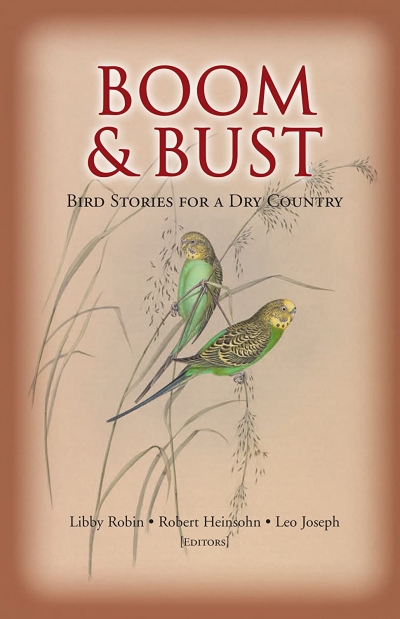Peter Menkhorst
Upside Down World: Early European Impressions of Australia’s Curious Animals by Penny Olsen
by Peter Menkhorst •
Boom & Bust: Bird stories for a dry country edited by Libby Robin, Robert Heinsohn and Leo Joseph
by Peter Menkhorst •
The Wisdom of Birds: An illustrated history of ornithology by Tim Birkhead
by Peter Menkhorst •





